Where did all the data go?
Scroll down to continueCrews clean up the Husky Energy oil spill on the North Saskatchewan River near Maidstone, Sask. on Friday July 22, 2016. Between 200,000 and 250,000 litres of crude oil and other material were leaked, according to the company. Photo by The Canadian Press.
One year after a pipeline spill contaminated the North Saskatchewan River and cut off drinking water supplies for tens of thousands, the company at the heart of the catastrophe says it never wants this to happen again.
But as Husky Energy attempts to turn the page on the disaster, those attempting to look back at what went wrong may actually find that some pages were deleted.
By Elizabeth McSheffrey
There is certain information about Husky Energy’s catastrophic oil spill in Saskatchewan last summer that you won’t find on the company’s brand new website.
How many beavers, fish and birds died. How many communities lived under emergency water restrictions while oil and foam washed up on their shorelines.
How much of the North Saskatchewan River — a drinking water source for thousands — was contaminated after the company’s pipeline spilled more than 200,000 litres of heavy oil and diluent into its waters in July 2016.
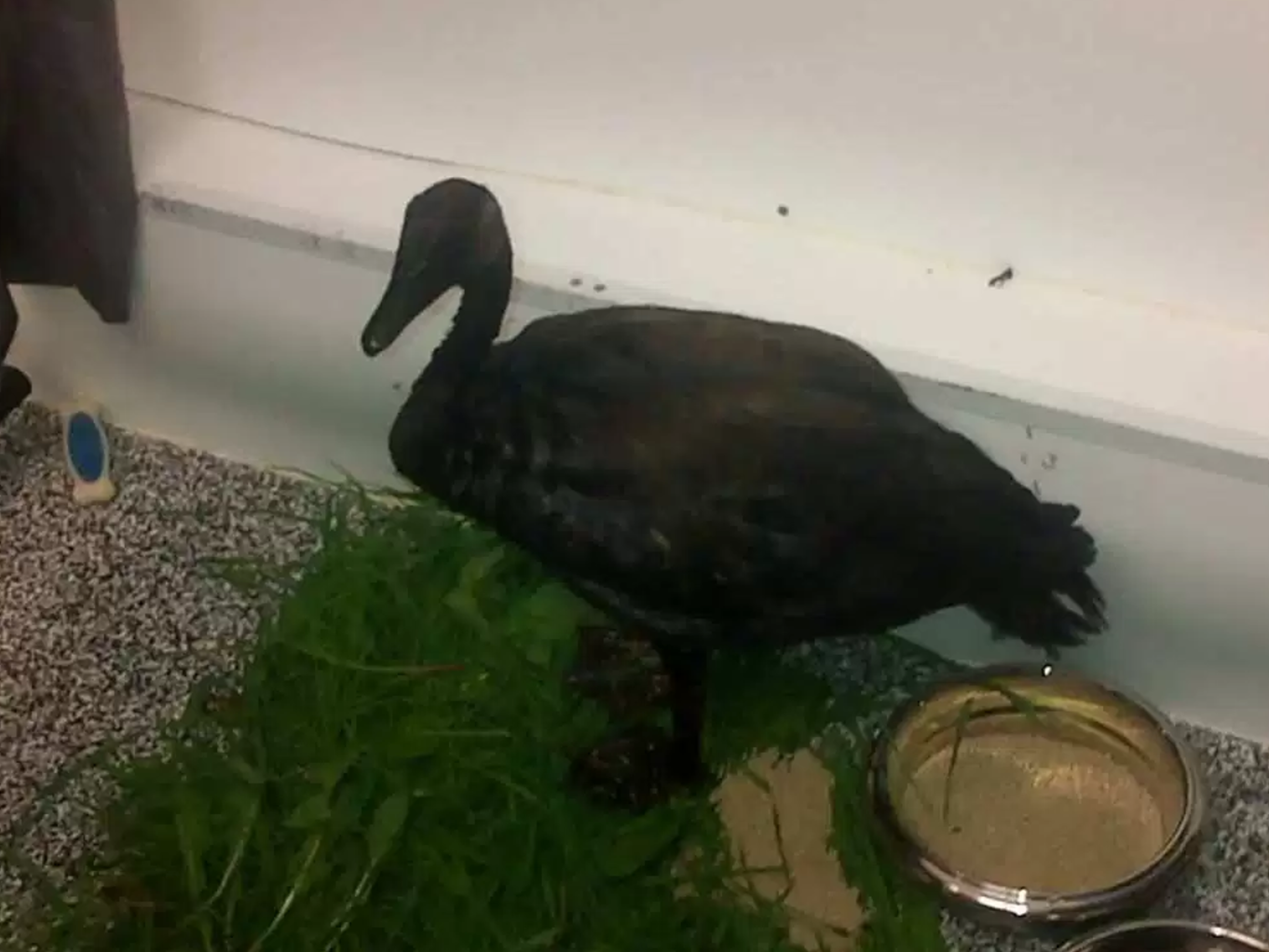
That information is nowhere to be found on Husky’s colourful new domain, which replaced the old tan-and-blue website in the months following the pipeline disaster.
After spill cleanup wrapped up for 2016, the Calgary-based energy company pulled down all spill updates and water quality reports from its website. Husky said it removed them “as they no longer provided the most up to date information,” and that it continues to report all updates to the appropriate regulators, which share that information with the public.
A matter of transparency
In the wake of the disaster, the company said it followed all the government rules on public reporting. But some oil and gas industry observers question why Husky removed details about the impacts of the spill from its own website, less than one year later.
While the information is accessible to anyone who searches for it on the Saskatchewan government's website, a number of critics told National Observer that both the province and the company need to be more open and transparent about what happened.
They also argue that even though there are no rules requiring Husky to keep the information about the disaster online, the company has an ethical obligation to ensure people are informed, from shareholders to staff to neighbours.
In addition to the deleted spill information, a National Observer investigation has revealed that not all of information on the oil spill reached communities affected by the 2016 disaster. Documents obtained through access to information legislation point to a portfolio of details that appeared to slip through under the radar — beginning with an official state visit to China by the prime minister of Canada.
Oil spill follows Trudeau to China
Scroll down to continuePrime Minister Justin Trudeau high-fives local youth during an official visit to China on Sept. 2, 2016. Photo courtesy of the prime minister's office
According to documents obtained through access to information legislation, Prime Minister Justin Trudeau was briefed on Husky's oil spill before he went to Beijing last year.
Concerns about secrecy and weak government oversight have become a national problem. It plagues the Canadian oil and gas industry in the form of stalled pipeline projects, as fears run high that regulators overseeing the oilpatch can't be trusted to do their jobs.
Prime Minister Justin Trudeau's Liberals swept to power in the 2015 election with a promise to fix federal oversight of the industry and restore public trust in major energy projects that he said were critical to jobs and economic growth.
In opposition, the Liberal leader accused former prime minister Stephen Harper's government of "bullying" environmental groups and acting as a "cheerleader" for the energy industry.
But the details of what Trudeau has said to those same industry executives behind closed doors are murky, National Observer has learned.
An 'urgent' update for the PM
Husky Energy's oil spill had such an impact, Trudeau's office requested “talking points” on the subject ahead of his official visit to China in September 2016, where he met Li Ka-shing. Li, 89, is a Hong Kong billionaire who controls more than two thirds of the shares at Husky Energy, The Globe and Mail reported last year.
As a result, the Husky oil spill made it into Trudeau’s briefing package for the trip, released to National Observer through access to information legislation. The prime minister's notes list Li's extensive credentials, noting that the business executive "has been engaged in commercial developments in Hong Kong for more than 60 years."
Internal email correspondence between two federal departments — Global Affairs Canada and Environment and Climate Change Canada — also reveal that officials deliberated what to tell Trudeau about the federal government and Husky Energy's recent interactions with the James Smith Cree Nation. James Smith is an Indigenous community more than 350 kilometres downstream from the spill, whose shores had been littered with dead crayfish, insects and oily sheen after the pipeline buckled.
“Husky has apologized for the oil spill publicly and would like to work with FN on the clean-up. The point to note is to determine whether there are impacts on the James Smith Cree Nation due to the oil spill,” reads an email from Environment Canada to Paul Bears of Global Affairs Canada on Aug. 29, 2016.
The notes contributed to what Bears described as an “update on an urgent PM meeting Note with Li-Ka-Shing, owner of Husky Energy,” (sic). In the briefing notes ultimately provided to the prime minister, the department said "it is not yet determined whether there are impacts on the James Smith Cree Nation due to the oil spill."

In an email, Husky Energy confirmed it had "no knowledge" that its spill was in the briefing notes.
In the end, talking points provided to the prime minister from Global Affairs Canada included the assertion that Ottawa takes threats to the environment "very seriously," and operates on a "Polluter Pays principle." It was also suggested that Trudeau thank Li Ka-shing for his charitable contributions to Canada.
"I understand that Husky has been cooperative to date," read the words suggested for Trudeau's meeting. "I also believe Husky has initiated engagement with Indigenous communities and heard their concerns. In Canada, we greatly value our relationships with these communities and all of those affected by accidents like this."
Trudeau's briefing notes 'very troubling'
But one of the First Nations affected by the spill said that public servants gave Trudeau inaccurate information in the briefing notes.
After reading these briefing notes, Chief Wally Burns of the James Smith Cree Nation was deeply disturbed. He said oil from Husky's failed pipeline washed up on their territory in as early as six days after spill, and there were wildlife casualties by the end of the month.
That's early enough, said Chief Burns, for the federal government not to question "whether there are impacts on the James Smith Cree Nation due to the oil spill," as it did in the briefing notes finalized between Aug. 29 and Sept. 6.
What ended up in the final package is therefore "very troubling," he told National Observer. He fundamentally believes Husky did not 'initiate engagement' with downstream Indigenous communities like his. Initially, the company even tried to suggest that it wasn't its own oil that had impacted James Smith Cree Nation territory.
"So whoever is briefing the federal government is way out of touch," said Chief Burns in an interview. "Husky did not take measures to protect communities downstream."
Since notes for Trudeau's briefing package referenced the James Smith Cree Nation directly by name, he added, his community should have been consulted.
Read the talking points here:
Talking points provided by Global Affairs Canada to Prime Minister Justin Trudeau ahead of his visit with Li Ka-shing, who controls Husky Energy, in China on Sept. 6, 2017. Documents obtained by National Observer
Media reported — and Trudeau tweeted — that the meeting with Li Ka-shing on Sept. 6 focused on trade and investment opportunities. The Husky oil spill and concerns of James Smith Cree Nation went quietly under the radar.
According to Cameron Ahmad, media relations manager for Trudeau’s office, it’s possible that the disaster was never brought up during the meeting.
“The Prime Minister holds many meetings with different stakeholders and individuals, throughout the year both in Canada and around the world,” said Ahmad via email. “With regard to the briefing note: The Prime Minister is frequently briefed on a variety of topics that may or may not be raised during a meeting – it does not necessarily mean that every topic is discussed.”
A pleasure to work with Li Ka-shing this morning as we discussed Hong Kong-Canada trade and investment. pic.twitter.com/EJysspM30m
— Justin Trudeau (@JustinTrudeau) September 6, 2016
Data pulled from Husky's website
Despite news of the spill travelling all the way to China, more than one year later, only cursory references to the rupture of Husky’s 19-year-old 16TAN pipeline near Maidstone, Sask., remain on the website, www.huskyenergy.com.
References to this “pipeline leak” or “pipeline incident” on July 21, 2016 appear in the company’s 2016 annual report and analysis of third quarter results, in the context of its $107-million cost — roughly $88 million of which was recovered through insurance proceeds.
Neither document mentions the catastrophic environmental impacts of the spill, which include more than 140 wildlife deaths in a watershed that is home to at least 10 endangered, threatened or at-risk species.
Nowhere in Husky’s tabs on community investment, health and wellness, environment or safety does it disclose the scramble to provide safe drinking water to the residents of Prince Albert, Melfort and North Battleford, or the millions paid in compensation to cities, businesses, and First Nations for expenses and losses incurred from the spill.
Months after it pulled down the spill updates and water sampling data related from its website, senior Husky officials emphasized the importance of sharing lessons learned from their pipeline disaster.
"...We’ve transferred the learnings, particularly on slope stability, over to all of our operations and have shared those with other pieces," Husky's chief operating officer, Robert Symunds, told participants in a July 21 second quarter conference call with investors and journalists.
"For the specifics of 16TAN repair, we have put in a number of enhancements over what was there before, particularly on monitoring movement on the line...So, I think we’re transferring that learning everywhere."
More contaminated samples
Scroll down to continueAn oily sheen coats the surface of the North Saskatchewan River after a Husky Energy pipeline leak reported to officials on July 21, 2016. Photo by The Canadian Press
At least 15 samples taken from the North Saskatchewan River after Husky Energy's oil spill were contaminated beyond what is safe for human consumption.
While deleted from Husky’s website, photos and detailed descriptions of the spill’s impacts remain catalogued in media reports and regular updates from the Saskatchewan government and Water Security Agency (WSA).
Oil removal updates circulated within Environment and Climate Change Canada — obtained through access to information legislation — reveal three flunked water quality tests that never made it into news reports on contamination caused by the leak. These samples, taken by Husky’s technical expert team, contained amounts of a carcinogenic hydrocarbon called benzo(a)pyrene that exceeded federal or provincial drinking water guidelines. Those guidelines determine the amount of excess matter, including minerals, silt, vegetation and agricultural run-off that is safe for humans to drink in their water.
These samples, along with 15 other drinking water exceedances (12 of which contained the carcinogenic benzo(a)pyrene), were published in a 362-page report submitted to Saskatchewan regulators. The report was made public on Sept. 16, 2016 — the same day the province’s Water Security Agency (WSA) declared the river water safe to drink from again.
At that point, only six out of 16 total drinking water guideline exceedances had been reported by media. The rest of the failed samples in Husky’s assessment were not brought up by the company’s experts or the WSA during a press conference on Sept. 16, and subsequently, was not widely reported as news spread declaring that the water was safe for consumption.
Asked why it did not proactively disclose those contaminated samples, the WSA emphasized that even with these failed samples, it still considered the water safe. The exceedances were also based on untreated water samples, it explained, and no one would drink untreated water from the river.
"...There was no risk related to the marked exceedances of B(a)P of untreated river water, as alternate source supplies were being used at the time," said Sam Ferris, WSA's executive director of environmental and municipal management. "And under normal circumstances, river water would not be consumed without proper treatment in advance."
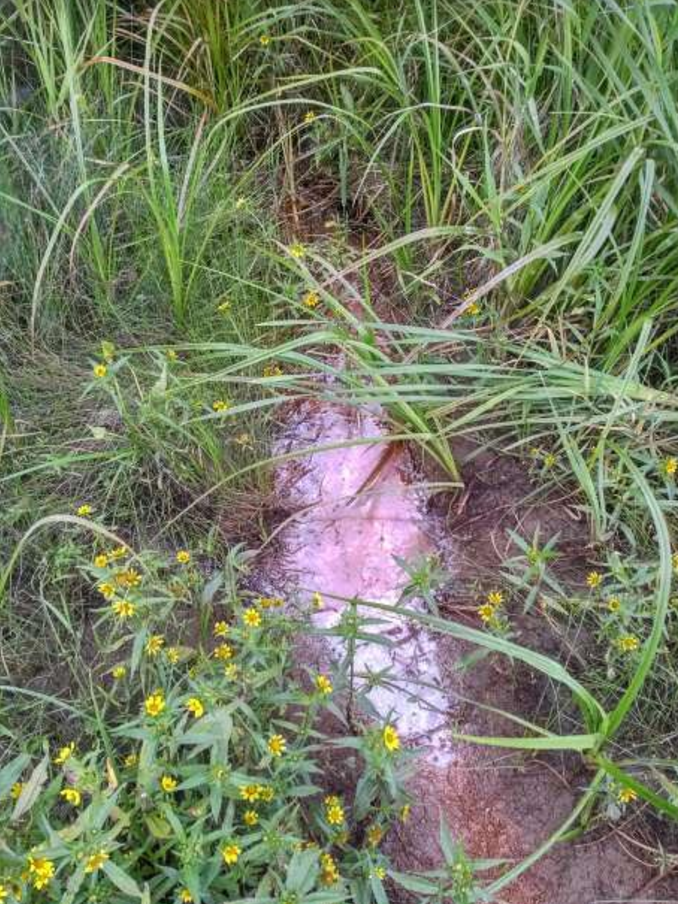
Husky spokesperson Mel Duvall also assured National Observer that all the failed samples — not only those reported by media — were taken into account in the WSA’s decision, even if not proactively discussed with reporters.
“The WSA did not declare it was safe to reopen the water intakes until it had both its own testing results in hand, as well as the results from the North Saskatchewan Water Source Risk Assessment,” Duvall said in an email statement.
“A Human Health Risk Assessment, which was a component of (Husky’s) overall report, concluded that chemicals of potential concern detected in water from the North Saskatchewan River do not present unacceptable health risks to residents whose water supply is sourced from the river.”
Duvall also noted that drinking water standards for benzo(a)pyrene were later changed. Had the three failed samples raised in the Environment Canada updates been detected after these changes, they would not have exceeded the drinking water standards.
The samples collected over the summer, he explained, exceeded 0.00001 milligrams per litre — the maximum ‘acceptable’ concentration of the cancer-causing benzo(a)pyrene at the time. But they fell below 0.00004 mg/l, the concentration later determined as acceptable by under the federal Canadian Drinking Water Quality Guideline in an update published in February 2017.
According to Health Canada, the guideline was changed when the department identified flaws in the design of the study that set the original 1986 standard of 0.00001 milligrams per litre and conducted additional testing.
By the end of the 2016, Prince Albert, Melfort and North Battleford had all resumed water intake from the river.
The internal Environment Canada emails provide the most complete picture of contamination during the height of spill cleanup that year. As of Aug. 29, 4.4 per cent of water, foam and sediment samples (about 244 samples) had shown exceedances of either human consumption or aquatic wildlife safety standards — a revelation that has not been widely reported until now.
'We never want this to happen again'
Scroll down to continueStaff at the Lend a Paw Animal Rescue race to clean up an oil-covered bird affected by the Husky Energy spill on Mon. July 25, 2016. Photo courtesy of Lend a Paw's Facebook
Husky Energy has been both criticized and praised for its response to the pipeline disaster that spilled more than 200,000 litres of petroleum products into the North Saskatchewan River, and left more than 145 animals dead.
Efforts to clean up the remainder of the oil spill resumed in spring of 2017. When Husky shut down its removal program for the winter, roughly 210,000 litres of oil — about 90 per cent of the spill — had been accounted for and cleaned, according to Government of Saskatchewan.
Third-party consultants hired by Husky determined that ground movement caused its pipeline to buckle, springing the leak that resulted in catastrophe. Independent pipeline safety experts consulted by National Observer agreed, but after viewing exclusive photos of the original spill site, argued that Husky could have prevented the disaster through better planning, maintenance and oversight of the aging pipeline, and that the company had probably violated construction codes.
In an email, Husky declined to comment directly on these allegations, but emphasized that investigations conducted by its own staff, the provincial regulator, and a third party consulting firm were “unanimous in their conclusion” that the break in the pipeline was caused by ground movement.
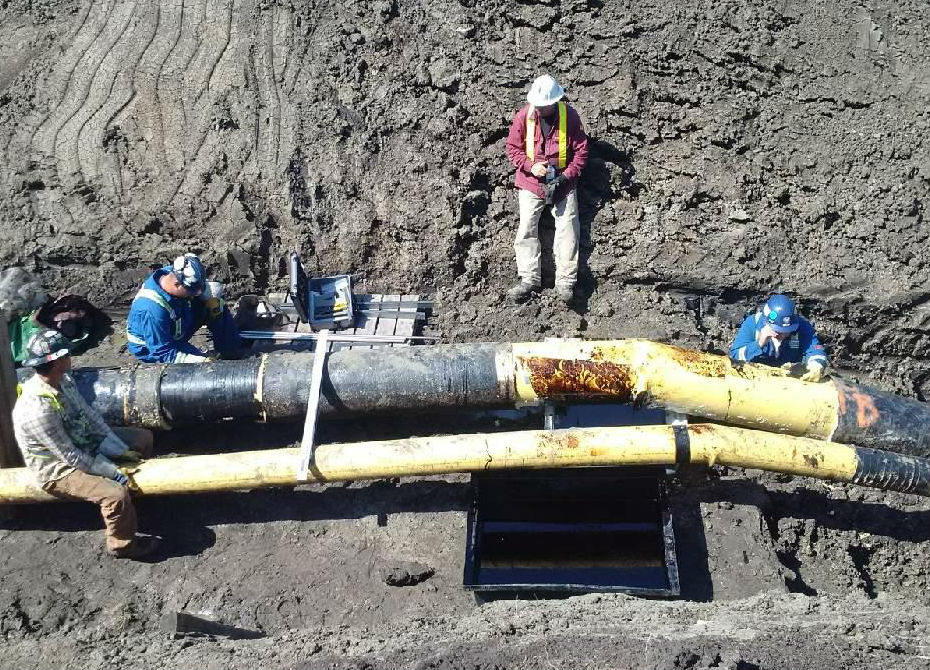
Provincial and federal authorities are still investigating the incident for possible breaches of fish and wildlife legislation — convictions that could result in multimillion-dollar penalties for Husky.
Yet as it faced criticism from observers about the independence of its evidence, the objectivity of its consulting firm, and the transparency surrounding the timeline of events in 2016, Husky Energy — one of Canada’s largest integrated energy companies — was also widely praised.
For impacted cities in Saskatchewan, its financial response to the disaster, including residential claims, was swift and efficient. The company spared no expense in its efforts to clean up impacted areas, and at the peak of operations, had surveyed more than 800 kilometres of shoreline, deployed dozens of booms and boats, involved more than 1,000 boots on the ground, and brought in dogs to sniff out cached oil.
“We never want this to happen again and we are using everything learned from the event to further improve our operations,” said Duvall. “Our first priority has been with the communities that were directly affected and we remain committed to building on the relationships we have forged over the past year.”
Asked about the impact the spill had on Husky employees responding to the disaster, Duvall responded: “This was never about us. It was about ensuring we set this right.”
Renewed effort with James Smith Cree Nation
As it stands, the company is working hard to set things right with the James Smith Cree Nation, a community of 1,600 people roughly 80 kilometres east of Prince Albert. When foam, tarred logs, and dead crayfish washed up on James Smith territory last summer, Chief Wally Burns said he had difficulty securing the company’s assistance with cleanup.
The band forked out more than $145,000 out of pocket for cleanup and independent water testing — cash that was later reimbursed by Husky. But until not after Husky had faced mounting media pressure, and joined the provincial government in making spill cleanup decisions "without James Smith Cree Nation input," said Chief Burns. He met with the company at its headquarters in Calgary on Aug. 3 to talk about spill monitoring, mediation, treaty protection, and water sampling moving forward, and noted an improvement in Husky's conduct.
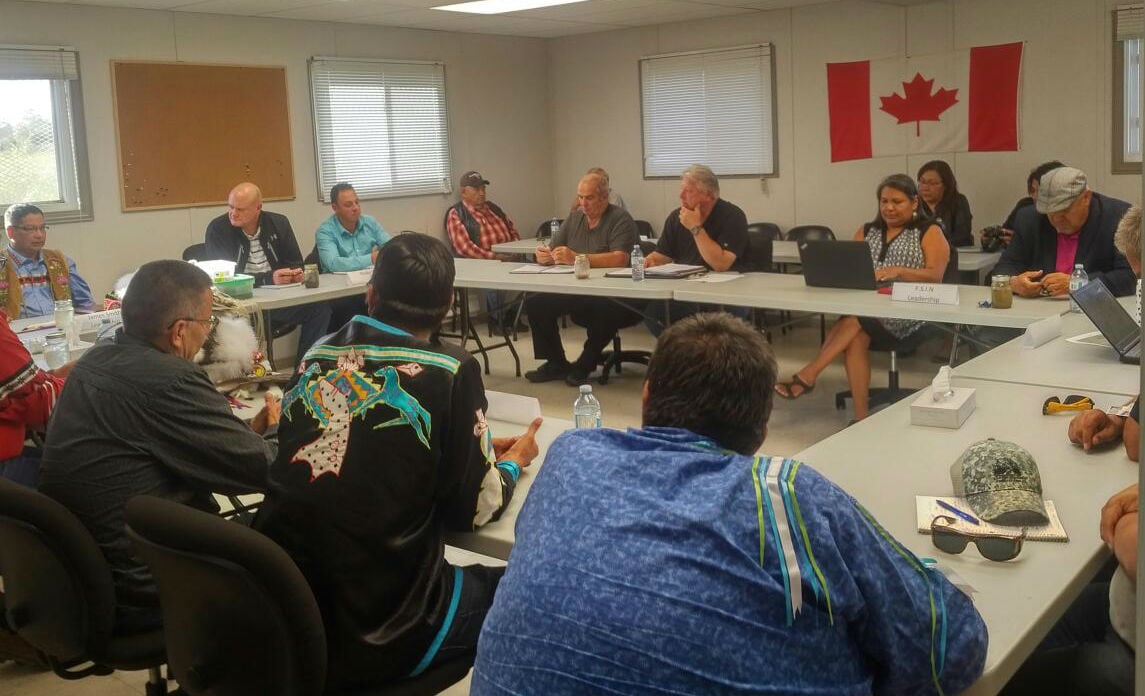
"The relationship with Husky last year was difficult for our community, but Husky officials have communicated that (lines) of communication are open and have pledged to be open and transparent," he told National Observer.
"I feel thus it is a step in the right direction and hope Husky will be transparent in information-sharing and building a positive relationship with all communities along the North Saskatchewan River."
The First Nation is now suing the Government of Saskatchewan for failing to take adequate measures to prevent the spill, which breached treaty rights to hunt and fish on their territory, and failing to effectively monitor, cleanup, and mitigate the damage. It is also considering a lawsuit against Husky, Chief Burns confirmed.
"The impacts (of the oil spill) affected us with our diet," he explained. "We lived off the land for many generations. We gathered, fished, hunted and picked out medicines on the river.
"I was disappointed with the provincial and federal response on the oil spill, and the meetings that took place with the (federal government), province and Husky Energy dictating what cleanup action would take place with James Smith Cree Nation input."
Husky said it could not comment on that lawsuit, but said it continues to "discuss possible solutions” with James Smith.
Meantime, Chief Burns expressed concern that Husky had deleted spill information from its website. In 2016, the company also declined for several weeks to confirm to National Observer on the record that its spill had impacted the James Smith to begin with.
Long road to recovery
Scroll down to continueSediment can be seen on the surface of the North Saskatchewan River in James Smith Cree Nation territory on June 19, 2017, nearly one year after the Husky oil spill. Photo courtesy of Chief Wally Burns
For the North Saskatchewan River, it’s been a long road to recovery.
Small amounts of tarred wood and vegetation debris continue to wash up on its shores, including the portion of the river in James Smith territory, several hundred kilometres away from the actual spill site.
No chemical exceedances for wildlife or drinking water have been detected this year, however, and shoreline cleanup and assessment is ongoing with an average of 45 boots on the ground per day. Water and sediment sampling continues, and submerged oil detection devices have been installed.
But as these cleanup efforts continue, Husky Energy is embroiled in a court battle with the federal Environment Department, which is trying to get access to some of the company's internal documents. Last year, as it carried out its investigation into the spill, Environment Canada asked Husky for a list of files it needed, according to court documents filed in July with the Regina Court of Queen’s Bench.
After carrying out a search warrant on the company’s Lloydminster office in March, reported the Saskatoon StarPhoenix, Environment Canada confiscated 25,000 documents, 11 envelopes with additional papers and a flash drive that were sealed and marked as "privileged." The department has now asked for a private hearing to determine whether Husky should be forced to disclose those documents, Environment Canada confirmed via email.
"As part of an active investigation, we are seeking to obtain a decision from a judge about whether certain records are protected by privilege," said Marie-Pascale Des Rosiers, press secretary for Environment Minister Catherine McKenna.
"These records could be pertinent to our investigation of alleged violations of the Fisheries Act following a pipeline spill near the North Saskatchewan River in July 2016. As this case is ongoing, no further comment would be appropriate at this time."
"It's a pretty standard process that Environment Canada is following and we respect that process," added Husky's Duvall.

A 'clear ethical breach'
While unable to comment on that lawsuit directly, Jason MacLean, a former corporate lawyer and environmental law expert questioned Husky’s decision not to keep spill response and contamination records on its own web page.
While ostensibly legal, the decision represents a “clear ethical breach,” said the University of Saskatchewan assistant professor — especially for a company that has accepted “full responsibility” for the disaster, and whose shiny new website touts its commitment to public safety, environmental stewardship, and operational integrity.
“Their website is replete with really broad but also pretty tangible corporate social responsibility language,” MacLean told National Observer. “Husky has voluntarily draped itself…in community accountability and stakeholder engagement language. It’s undertaken all of these commitments, and its actions are completely antithetical to these.”
Gretchen Fitzgerald, national program director for Sierra Club Canada Foundation, said that all oil companies should be as “open and transparent as they can” about spills in order to show the public, stakeholders and investors that they take incidents seriously. She called Husky’s information take-down “alarming,” particularly given that spill cleanup is still happening daily, and said it may not be enough to report new findings to regulators alone.
“I think we need to hear it from both (the company and the government),” she told National Observer. “I just think it’s important for their investors, people who work for them, and people whose communities they run through to know what the company’s reputation is, its history and what it does when a disaster happens.”
'It's not our practice'
According to Husky’s company disclosure policy, it must keep news releases for the current and preceding fiscal year on its website — a task overseen by the senior vice-president of corporate affairs. Asked whether it had violated this policy in taking down information related to the 2016 spill, Duvall insisted Husky had not.
The spill updates weren’t ‘news releases,’ he explained, and therefore not required to remain online.
“It is not our practice to issue news releases for such events,” said Duvall. “We provided updates on our website, took part in early conference calls with the province, communicated directly with the affected communities and First Nations, and answered media questions.
“In addition, we placed advertisements in local media providing information on how individuals and businesses could contact Husky to receive compensation for costs incurred. From the beginning, we felt it was extremely important to be in the communities that were impacted and to deal directly with those communities.”
Katie Gibbs, executive director of Ottawa’s Evidence for Democracy, said that as long as the information is available to the public somehow, she doesn’t see Husky’s take-down as a particularly egregious transparency problem. The organization promotes the transparent use of evidence in government decision-making in Canada and spoke with National Observer by phone.
“Certainly, the most transparent thing to do would be to make all the information (Husky) has available to the public (on its website),” said Gibbs. “The more ways the public can access the information the better and the easier it’s going to be for people to find it.
“But for me, the bottom line is that the public has access to this information... So as long as all the information is available from the government, I don’t necessarily see it being a huge transparency problem.”
Husky's disclosure obligations
Scroll down to continueThe Government of Saskatchewan, led by outgoing Premier Brad Wall (above), is currently facing a lawsuit from the James Smith Cree Nation for failing to prevent the Husky oil spill and for the ensuing violation of treaty-protected rights. File photo by Alex Tétreault
The matter remains under provincial government investigation.
Under Alberta securities law, which protect the province’s investors, the company is required to report litigation or investment risks, which could include major oil spills. The amount of disclosure required, said Hilary McMeekin, communications manager for the Alberta Securities Commission, depends on the “severity of the spill.”
“If the incident is of such an extent to be considered material (material is defined as an occurrence, event, or information that is sufficiently significant to influence the share price) there are specific disclosure requirements, as contemplated under the National Instrument 51-102 Continues Disclosure Obligations,” she said via email.
While no trace of the spill’s social or environmental impact could be found in Husky’s annual reports and powerpoint presentations to investors, Duvall said Husky has fulfilled all of its reporting requirements. All relevant information, including spill locations, wildlife casualties and environmental impact, he added, continues to be reported to the appropriate regulators.
“We respect the role of the regulator in this process,” Duvall explained. “We disclose information on spills in our Community Report, which is available to all investors and the public. We comply with all securities reporting regulations and with all rules and regulations governing the industry.
"We also invite media to ask questions on our investor conference calls and we have been open and forthcoming in answering any questions related to the spill.”
The Government of Saskatchewan was unable to comment on whether Husky had fulfilled its reporting and disclosure obligations, as the matter remains under provincial investigation.
"Saskatchewan's prosecutions branch is currently reviewing the spill incident, and that review would include matters of public notification," said media relations officer Karen Hill. "We are unable comment on the appropriateness of these actions until that process is complete."
Without commenting on the Husky Energy in particular, Gaétan Caron, a former chair and CEO of the National Energy Board suggested that if residents are unhappy with a company's transparency or disclosure on oil spills, their attention should be on the regulator, not necessarily the company. The National Energy Board is Canada's federal pipeline regulator, and has its own strict compliance rules in the event of an oil spill.
"To whack a company for not doing more than the law requires — that can be satisfying and if I’m an environmental activist, for example who wants to get exposure from the media, I can go very far with that — but I would not choose that mode of action myself.
“The requirement to make data available to citizens must come from a governmental source or the regulator of that jurisdiction."
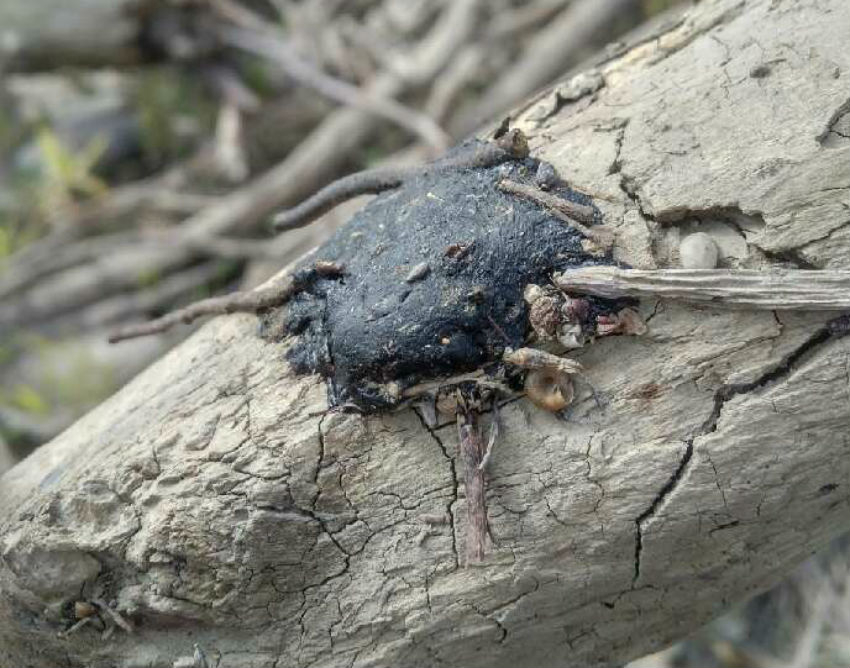
Public has a right to more, says lawyer
MacLean however, suggested that the public has a right to demand “more fulsome disclosure” that aligns with Husky’s own publicly-stated standards of conduct. Since the spill occurred, public requests to have Husky's pipeline inspection records released by the Saskatchewan government have failed, despite a recommendation to do so from the province's privacy commissioner.
“If you spill oil into a river, into an ecosystem, on treaty land, you have an ethical obligation to be as forthcoming, upfront, transparent and engaged with stakeholders as you possibly can — short of disclosing competitively sensitive information,” said MacLean.
“That’s an ethical obligation at the very least, and in addition to cleaning it up, taking remedial measures to improve your business and technology to ensure it never happens again.”
How does Husky’s transparency stack up?
According to Saskatchewan's WSA, all of Husky’s spill monitoring was done on a voluntary basis, and the provincial government did not “compel” the company to release any of its investigation results to the public. Other Canadian oil companies however — also Calgary-based — have voluntarily kept their spill records online, including Enbridge and Nexen.
Press statements, cleanup and compensation updates, along with a timeline events remain on Enbridge’s website more than six years after its pipeline disaster in Michigan. On July 26, 2010, Enbridge’s 30-inch pipeline ruptured, spilling millions of gallons of oil into the Talmadge Creek and Kalamazoo River — creating a cleanup tab of more than US$1 billion.
The company’s corporate social responsibility (CSR) policy places great emphasis on “integrity,” which includes maintaining “truth in all interactions,” and not taking “the easy way out.” In addition, on a web page dedicated to the Kalamazoo oil spill, Enbridge says it “memorialized” the incident to help it ensure such a catastrophe never happens again.
“Immediately following the Line 6B release in July 2010, Enbridge made a promise to the people of south-central Michigan to restore the area, including the Kalamazoo River and Talmadge Creek, as close as possible to its pre-spill condition,” it says.
“We continue to honor that promise. As a company, we have memorialized the Marshall release — to guide our decisions, and strengthen our resolve to prevent such an event from ever happening again.”
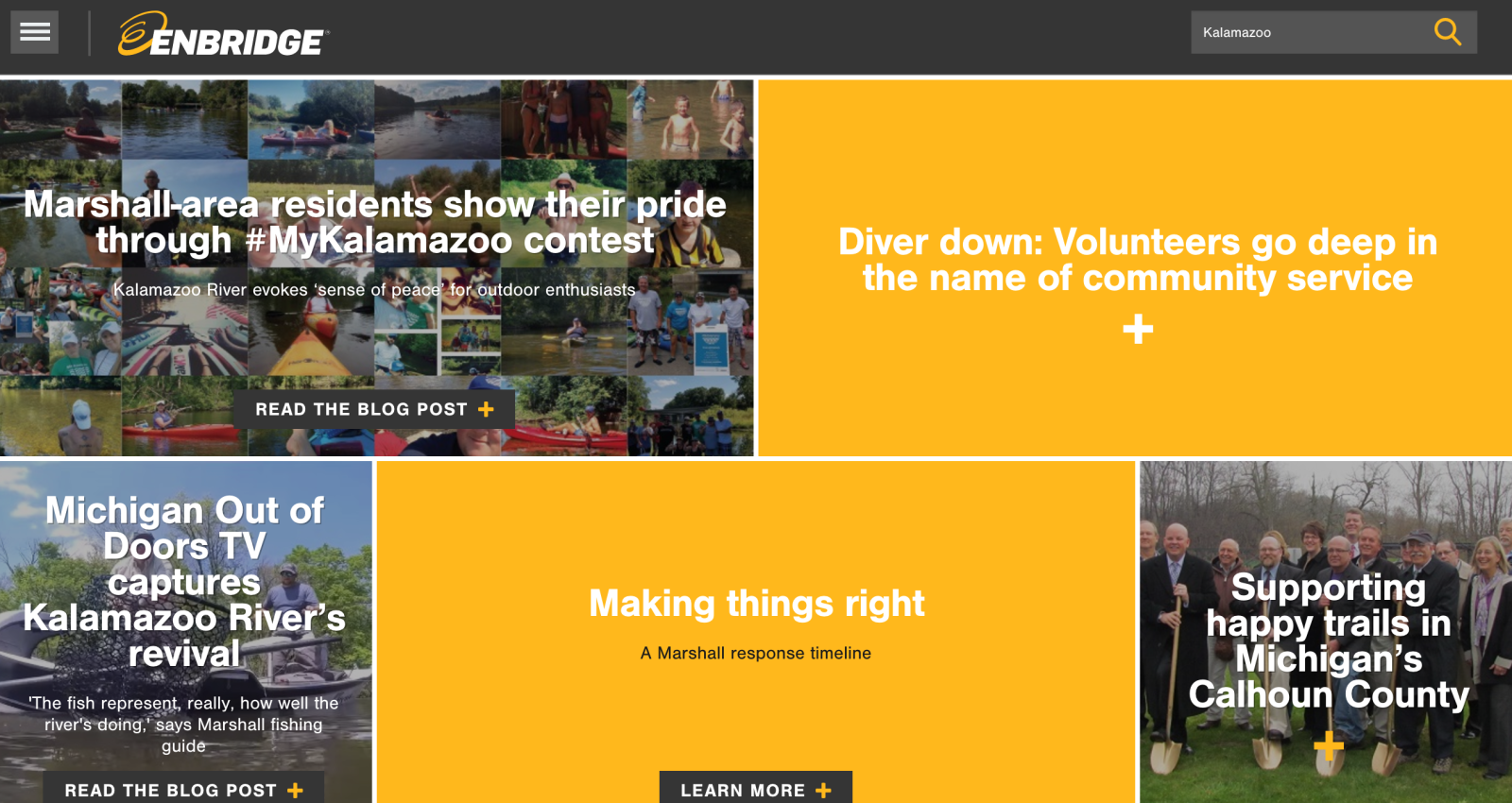
Nexen Energy, whose July 2015 pipelines spill near southeast of Fort McMurray was one of the largest in Alberta’s history, has also kept press statements and cleanup updates online. Its sustainability performance report for that year mentions the spill directly, and the company’s effort to minimize its impact on the environment and wildlife.
Nexen did not respond to requests for comment on this story, but its online corporate social responsibility (CSR) page emphasizes the importance of “transparent reporting.”
“We build long-term trust by sharing information, consulting with stakeholders about business decisions and working collaboratively to understand their needs and expectations,” says the website. “In addition to our annual update on our sustainability performance, we also benchmark our performance against the industry’s best.”
Walking the CSR talk
MacLean said he applauds the companies that actually “walk the CSR talk,” but suggested that this is the exception rather than the rule. So can a company be sued for violating its own principles of business ethics?
The law is a “moving target” in that area, he explained. For the moment, he didn’t think a legal argument could be made that Husky breached its disclosure duty to the public, but “I think the law is going there,” he said.
Husky, meantime, has adopted several measures to ensure such an incident never happens again. At the embattled 16TAN pipeline near Maidstone, it has installed inclinometers to measure ground angles and increased the frequency of geotechnical surveys and in-line inspections. The company will use fibre optic cable alongside the pipeline, provide real-time measurements of temperature, strain and acoustics, and use a higher grade of steel and thicker wall pipe on the section currently under repair.
“We know this event had an impact on communities and First Nations downstream, and we worked closely with all groups and regulators throughout on a coordinated response,” said Duvall. “We are grateful for the support and cooperation we received and continue to receive from these communities.”
The Canadian Energy Pipeline Association, which declined to comment on this story also wrote in its 2017 performance report that "safety, environmental protection and emergy response are, and always have been our top priorities."
"Through CEPA, members work together to continuously improve in key areas to reach our goal of zero incidents."
